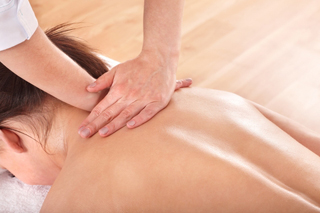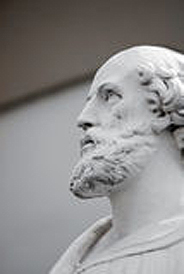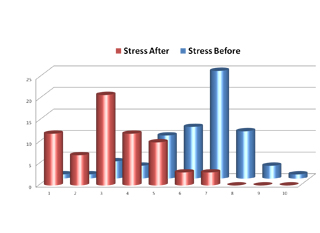Massage understood
 Through the ages wonderful quotes from renowned people have survived that test of time to demonstrate the value of massage and positive touch for mankind.
Through the ages wonderful quotes from renowned people have survived that test of time to demonstrate the value of massage and positive touch for mankind.
‘The Yellow Emperor Classic of Internal Medicine’ has become a landmark in the history of Chinese civilisation. From as far back as 475BC it was believed that “When the body is frequently startled and frightened the circulation in the veins and arteries ceases, and disease arises from numbness and lack of sensation”. What could be done to reawaken them?
 Hippocrates (460-370BC) often described as the father of medicine used a therapeutic approach based on the healing power of nature. According to his doctrine the body contains within the power to re-balance and heal itself. Hippocrates believed that all physicians should be trained in massage described at the time as rubbing; a method of healing. In Calvert’s ‘History of Massage’ Hippocrates was reported to say ‘Rubbing has the effect of relaxing, constricting, thickening and thinning; hard rubbing constricts, soft relaxes, much rubbing thins and moderate thickens’. For several hours in the morning these ancients devoted themselves to body care. As well as intricate exercise programmes and baths they also had a full body massage aimed at awakening the nerves, stimulating circulation and freeing the action of the joints.
Hippocrates (460-370BC) often described as the father of medicine used a therapeutic approach based on the healing power of nature. According to his doctrine the body contains within the power to re-balance and heal itself. Hippocrates believed that all physicians should be trained in massage described at the time as rubbing; a method of healing. In Calvert’s ‘History of Massage’ Hippocrates was reported to say ‘Rubbing has the effect of relaxing, constricting, thickening and thinning; hard rubbing constricts, soft relaxes, much rubbing thins and moderate thickens’. For several hours in the morning these ancients devoted themselves to body care. As well as intricate exercise programmes and baths they also had a full body massage aimed at awakening the nerves, stimulating circulation and freeing the action of the joints.
Galen (129-199) a prominent Greek-speaking Roman physician and philosopher agreed with Hippocrates’ ideas on rubbing and believed ‘Massage eliminates the waste products of nutrition and the poisons of fatigue’. Roman gladiators were given a brisk rubdown massage with fragrant oils before the games began. Practices of massage were made available to the public by building baths and saunas. The art of massage was also highly respected as a treatment for weak and diseased conditions and as an aid in removing stiffness and soreness from muscles. The Romans, as the Greeks before them, used massage as part of their gym and health routine.
For modern day, Per Henrik Ling (1776-1839) and Goerg Mezger (1838-1909) brought all these ideas together initially for the benefit of gymnasts as part of their health and fitness regime and then available to all as Swedish Massage. Ling’s medical gymnastic system was the seed of Swedish massage that is now used worldwide but it was Mezger who organized the passive manipulations into simple divisions and labelled them with French terms.
Effleurage described the preparatory, background stroke that gently helps to become attuned with the client. The reason for it being defined as a background stroke is that it is also used to join other movements together. The benefits are it relaxes the body, speeds up venous and lymph flow to eliminate the waste products Galen spoke of.
 Petrissage is the technique that uses kneading and rubbing to manipulate tissues and muscle by compressing tissue against tissue. The benefits of this movement include it aids development of muscle tone as Hippocrates described and breaks down knotty areas caused by tension. Kneading eliminates waste from deep tissue and can be seen as a decongestant. It breaks down fat and improves metabolism as it stimulates circulation.
Petrissage is the technique that uses kneading and rubbing to manipulate tissues and muscle by compressing tissue against tissue. The benefits of this movement include it aids development of muscle tone as Hippocrates described and breaks down knotty areas caused by tension. Kneading eliminates waste from deep tissue and can be seen as a decongestant. It breaks down fat and improves metabolism as it stimulates circulation.
Tapotement describes the movements that strike or tap the body, a form of percussion. Each hand audibly strikes the body rhythmically and rapidly causing a shaking through the body. These movements are invigorating, improve circulation and stimulate improved muscle tone.
So how can these techniques help to maintain health? Dr Candace Pert explained how each individual cell of the body stores memory, a complete blueprint of our existence that comprises of physical, mental and emotional experiences. More specifically, various muscle related tasks seem to be easier to perform after previous practice. It is as if the muscle “remembers” this helps when building up strength in a gym but a concern when a muscle remains tight and overcontracted due to sustained positioning at a desk. The muscles remember how to contract but the memory of a relaxed state becomes too distant to recall. I have found that using the sides of the little fingers, a form of tapotement on a knot or an area of over-contracted muscle can help it to release and relax. This experience is so much more enjoyable than using deep thumb pressure to facilitate submission of the muscles fibres.
 The mechanics of massage have been explained and justifies regular massage treatments. It isn’t just a ‘pamper’ but physically helps your body to work effectively. A high performance motorcar always has regular services to maintain efficiently so why shouldn’t we be entitled to the same kind of care? Let’s also remind ourselves other ways that massage can help on a different level.
The mechanics of massage have been explained and justifies regular massage treatments. It isn’t just a ‘pamper’ but physically helps your body to work effectively. A high performance motorcar always has regular services to maintain efficiently so why shouldn’t we be entitled to the same kind of care? Let’s also remind ourselves other ways that massage can help on a different level.
Whilst running Complementary Therapy Foundation degree I had the opportunity to take massage out into the community to see how it affects hard working members of the public. My students and I travelled to local fire brigades and hospitals to treat employees working in highly stressed environments. Research and feedback after each employee experienced 15 minutes of clothed massage was inspiring.
Questionnaires were completed by the staff asking how stressed they were between 1-10. Blue columns above depict how stressed they were before the massage & the red column shows the perceived decrease in stress afterwards. The highest level before was 7 for 25 staff and the greatest number felt their stress had reduced by a level of 3 after their massage. Two staff members even felt their stress levels had been reduced by 7. Other figures showed a substantial energy increase with one member from ICU fed back that he felt refreshed and better able to cope with the afternoon on a busy ward. So massage can help on a physical and mental level as many find it reduces their feeling of stress.
I do hope the sun shines for you and with
Best wishes for a Happy and Healthy 2014
Sarah Greenhalgh

